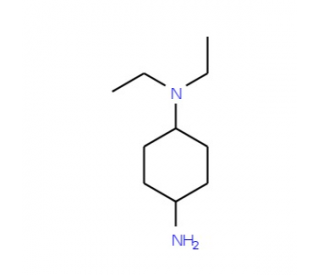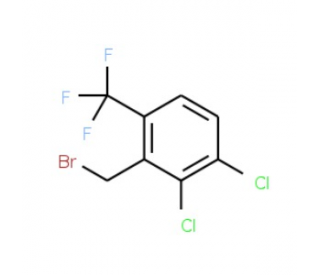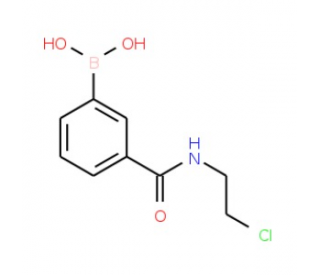詳細(xì)說明
Purity
>95%, by SDS-PAGE under reducing conditions and visualized by silver stain
Endotoxin Level
<0.10 EU per 1 μg of the protein by the LAL method.
Activity
Measured by the ability of the immobilized protein to support the adhesion of BCE C/D?1b bovine corneal endothelial cells. The ED 50 for this effect is 0.5-2.5 μg/mL.
Source
Human embryonic kidney cell, HEK293-derived
Human LRIG1
(Ala35-Ser779)
Accession # Q96JA1HP GGGSGGGSGGGS HHHHHH N-terminus C-terminus Accession #
N-terminal Sequence
AnalysisAla35
Predicted Molecular Mass
84 kDa
SDS-PAGE
91-120 kDa, reducing conditions
8504-LR |
| |
Formulation Lyophilized from a 0.2 μm filtered solution in MES, NaCl and EDTA. | ||
Reconstitution Reconstitute at 200 μg/mL in sterile water. | ||
Shipping The product is shipped with polar packs. Upon receipt, store it immediately at the temperature recommended below. | ||
Stability & Storage: Use a manual defrost freezer and avoid repeated freeze-thaw cycles.
|
Background: LRIG1
LRIG1 is a 145 kDa leucine-rich repeat (LRR) and Ig-like domain-containing single-pass transmembrane glycoprotein. It has been shown to suppress tumor growth, regulate tissue homeostasis, and maintain stem cell quiescence (1-5). Human LRIG1 is synthesized with a 34 amino acid (aa) signal sequence, a 759 aa extracellular domain (ECD), a 21 aa transmembrane sequence, and a 278 aa cytoplasmic region. The LRIG1 ECD contains three C-type Ig-like domains as well as fifteen LRRs that are flanked by cysteine-rich regions (6, 7). The ECD of human LRIG1 shares 90% and 88% aa identity with the ECD of mouse and rat LRIG1, respectively. LRIG1 shares 45-50% aa identity with its mammalian paralogs, LRIG2 and LRIG3. LIRG1 is expressed widely throughout mouse and human tissues, including the liver, brain, stomach, small intestine, skeletal muscle, cornea, and hair follicle (3, 6, 8). LRIG1 functions as a tumor suppressor by controlling cell proliferation through the negative regulation of the EGF family of receptor tyrosine kinases. Specifically, the ECD of LRIG1 binds to EGF R, ErbB2, ErbB3, and ErbB4, inducing receptor ubiquitination and degradation (9, 10). LRIG1 expression, which is often dysregulated in human cancers, is a prognostic indicator of cancer development and relapse; decreased LRIG1 is associated with an increase in recurrence and mortality for a variety of cancers including breast, uterine, head-and-neck, glioma, prostate, and squamous cell (2, 11-13). Tissue homeostasis and stem cell dormancy is also thought to be modulated by the actions of LRIG1 on cell proliferation (14).
References:
Chang, L. et al. (2013) J. Exp. Clin. Cancer Res. 32:101.
Lindquist, D. et al. (2014) Acta Oncol. 53:1135.
Nakamura, T. et al. (2014) J. Clin. Invest. 124:385.
Wang, Y. et al. (2013) Br. J. Cancer 108:1765.
Jensen, K.B. and F.M. Watt (2006) Proc. Natl. Acad. Sci. U S A 103:11958.
Guo, D. et al. (2004) Genomics 84:157.
Jensen, K.B. et al. (2009) Cell Stem Cell 4:427.
Suzuki, H. et al. (1996) J. Biol. Chem. 271:18981.
Gur, G. et al. (2004) EMBO J. 23:3270.
Laederich, M.B. et al. (2004) J. Biol. Chem. 279:47050.
Johansson, M. et al. (2013) Neuro. Oncol. 15:1200.
Thomasson, M. et al. (2003) Br. J. Cancer 89:1285.
Thompson, P.A. et al. (2014) Cancer Res. 74:2928.
Ordonez-Moran, P. and J. Huelsken (2012) EMBO J. 31:2064.
Long Name:
Leucine-rich Repeats and Immunoglobulin-like Domains 1
Entrez Gene IDs:
26018 (Human); 16206 (Mouse); 312574 (Rat)
Alternate Names:
D6Bwg0781e; Img; LIG1; LIG-1; LRIG1










 粵公網(wǎng)安備44196802000105號(hào)
粵公網(wǎng)安備44196802000105號(hào)